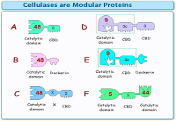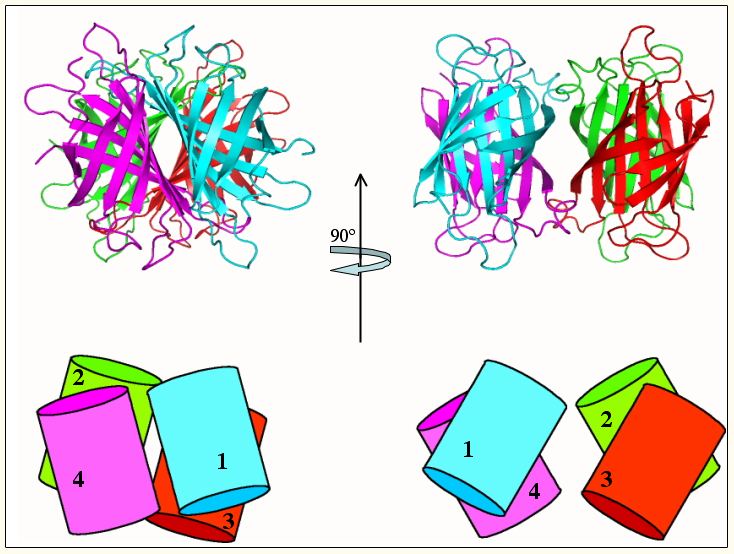The cellulosome is an intricate multi-enzyme machine produced by many cellulolytic microorganisms. It is designed for efficient degradation of plant cell wall polysaccharides, notably cellulose — the most abundant organic polymer on Earth. The cellulosome system represents an exciting and unique example of a Lego-like construction of biologically active, interacting components on the molecular level – a prime example of Nature “at play”. The Lego-like construction consists of a multi-functional integrating subunit (called scaffoldin), responsible for organizing the various cellulolytic subunits (e.g., the enzymes) into the complex. This is accomplished by the interaction of two complementary classes of module, located on the two separate types of interacting subunits, i.e., a cohesin module on the scaffoldin and a dockerin module on each enzymatic subunit. The high-affinity cohesin-dockerin interaction defines the cellulosome structure. Attachment of the cellulosome to its substrate is mediated by a scaffoldin-borne cellulose-binding module (CBM) that comprises part of the scaffoldin subunit.
Our studies serve to better understand these intercomponent interactions, how the cellulosome is constructed and how cellulosome architecture contributes to the enhanced synergistic activities, observed for its combination of enzyme components. Moreover, knowledge of these interactions provide a platform for biotechnological and nanotechnological applications, including prospects for producing biofuels from plant cell wall biomass – a crucial goal of global importance in the 21st century for all mankind.






